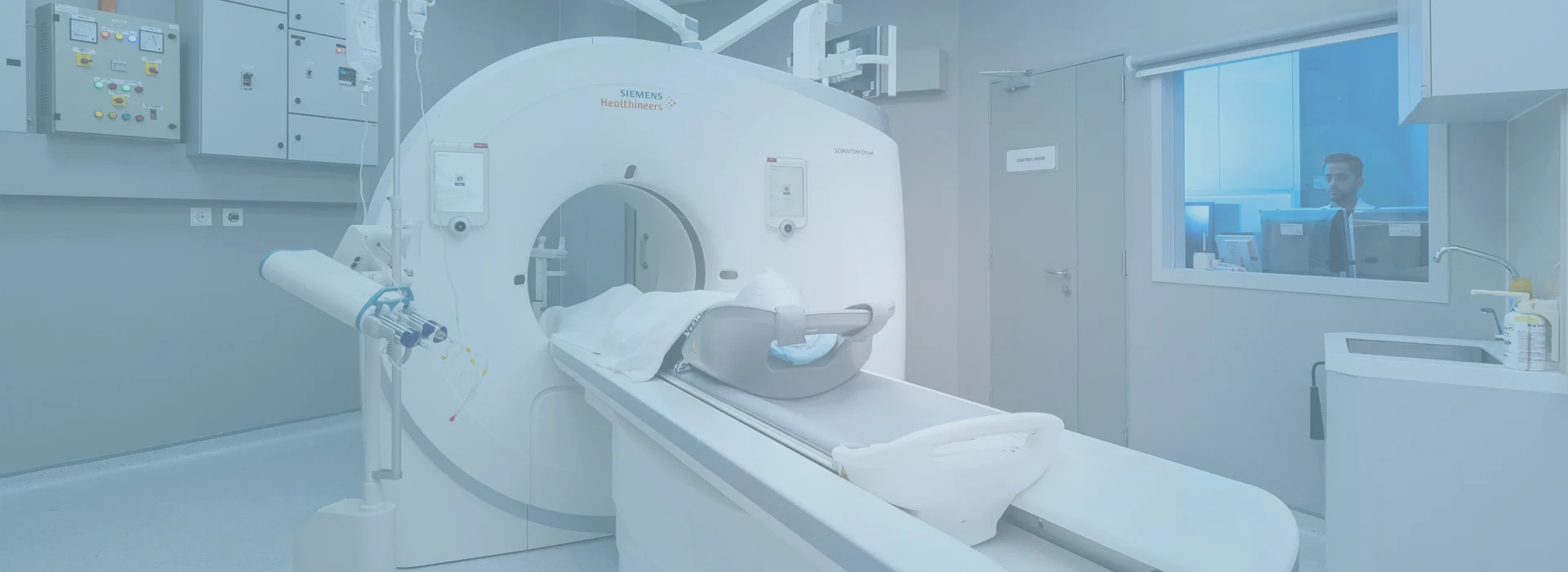
30 Apr Brain Tumours: Everything You Need to Know
Brain Tumours: Everything You Need to Know
By Island Hospital | Apr 30, 2024 12:00:00 PM
Medical Reviewer: Dr. Tang Weng Heng, Oncologist
Brain tumour – a term that can elicit fear and hopelessness.
When faced with this diagnosis, many immediately assume the worst – that it signifies a death sentence. However, this is not always the case.
With appropriate treatments, numerous patients manage to recover and resume their everyday lives or, at least, can get more time than expected, depending on the nature of their tumours.
In this blog post, we’ll explore the types, symptoms, risk factors, diagnosis, treatments, ways to live with, and measures to prevent brain tumours.
Types of Brain Tumour
Brain tumours arise from the uncontrolled growth of abnormal cells within the brain. Currently, researchers have identified more than 150 types of brain tumours.
Based on the origin of the abnormal cell growth, brain tumours can be classified into primary brain tumours and secondary brain tumours.
Primary Brain Tumours
Primary brain tumours originate from the brain itself, accounting for about 40% of all brain tumours. These tumours can be further categorized into intra-axial tumours and extra-axial tumours.
Intra-axial tumours | Extra-axial tumours |
|---|---|
|
|
Notably, primary brain tumours are mostly benign (not cancerous). However, they may exert pressure on the nearby parts of the brain and nerves, leading to various health problems.
Some of the common primary brain tumours are glioma, meningioma, and pituitary tumours.
Secondary Brain Tumours
Secondary brain tumours spread from their original locations to the brain, accounting for about 60% of brain tumours. The cancers that most commonly spread to the brain are breast cancer, colon cancer, lung cancer, and kidney cancer.
Unlike primary brain tumours, secondary brain tumours are primarily malignant (cancerous), as they are made of the same type of cancerous cells as their primary cancer.
Grading of Brain Tumours
Brain tumours are classified by grade rather than stage, as they generally do not metastasize to other body parts like other cancers.
The World Health Organization (WHO) has graded brain tumours based on the aggressiveness and activity of the cancer cells from Grade 1 to Grade 4, where higher grades indicate more aggressive and dangerous tumours.
Generally speaking, Grade 1 and 2 brain tumours are considered non-cancerous, comprising 60% of cases. They have a slower disease progression, lack invasiveness, and do not spread to surrounding tissues.
In contrast, Grade 3 and 4 brain tumours are cancerous, making up 40% of cases. They have a faster disease progression, higher invasiveness, and a greater likelihood of recurrence and spread.
Symptoms of Brain Tumour
The common symptoms experienced by individuals with brain tumours include headaches, seizures, and vomiting. These symptoms are attributed to the increased intracranial pressure caused by the tumour growth within the confined space of the skull.
Given the brain’s specialized divisions, symptoms of brain tumours vary significantly based on the tumour’s specific site.
- Frontal Lobe
- Functions: Responsible for a multitude of cognitive and behavioral functions
- Symptoms: Changes in personality, mood, and behavior; difficulties in concentration and sensory processing
- Occipital Lobe
- Functions: Visual processing
- Symptoms: Vision impairment and perceptual disturbances
- Parietal Lobe
- Functions: Sensory integration and spatial cognition
- Symptoms: Difficulty with spatial awareness and language processing
- Temporal Lobe
- Functions: Auditory processing and memory formation
- Symptoms: Hearing impairments, language deficits, and memory loss
- Cerebellum
- Functions: Motor coordination and balancing
- Symptoms: Motor dysfunction and balance issues
- Brain Stem
- Functions: Involuntary processes (e.g., heartbeat, breathing, swallowing, etc.)
- Symptoms: Seizures, difficulty in breathing and swallowing
- Pineal Gland
- Functions: Production of hormone melatonin; ensuring the normal flow of cerebrospinal fluid (CSF)
- Symptoms: Headaches and nausea
- Pituitary Gland
- Functions: Production of various hormones for different body functions
- Symptoms: Weight fluctuations, sexual dysfunction, and temperature dysregulation
- Spinal Cord
- Functions: Motor and sensory functions
- Symptoms: Bladder or bowel incontinence, sensory deficits, or muscle weakness in the limbs
Risk Factors of Brain Tumour
Although brain tumours are relatively uncommon, several key risk factors may increase your chances of getting brain tumours.
- Age
Older age is associated with a greater risk of getting brain tumours.
- Radiation Exposure
Frequent exposure to radiation environments, such as nuclear power plant accidents, prior radiation therapy, X-rays, or CT scans, can increase brain tumour risk.
- Weakened Immune System
People with weaker immune systems, like those with HIV/AIDS, have a higher risk of developing brain tumours.
- Genetics and Family History
Having a family member with a brain tumour can increase one’s risk of getting brain tumours. However, only about 5-10% of brain tumours are genetically inherited.
Remarkably, there is no clear evidence to support links between brain tumour development and regular exposure to mobile phones, electronic devices, electromagnetic fields, power lines, viruses, tobacco, alcohol, hair dyes, pesticides, air pollution, or head trauma.
Diagnosis of Brain Tumour
To diagnose brain tumours accurately, health providers will perform a comprehensive evaluation using a variety of tests.
Physical/Neurological Exams:
- Assess physical symptoms, neurological function, and overall health status.
- Evaluate cognitive abilities, vision, coordination, reflexes, and other neurological indicators.
Imaging Tests:
- MRI test (Magnetic Resonance Imaging): Produce detailed images of your brain structure and tumour through magnetic and radio waves.
- CT scan (Computed Tomography): Produce detailed 3-D images of your brain structure and tumour through X-rays.
- Angiography: Visualize the blood vessels around the brain tumour.
- dSkull X-rays: Detect fractures or abnormalities caused by brain tumours in the skull.
- PET scan (Positron Emission Tomography): Identify atypical metabolic activity of your brain tissues associated with tumours
Fluid/Tissue Sampling:
- Biopsy: Removal of a small piece of the brain tumour tissue for exact diagnosis of the type and grade of the tumour.
- Lumbar puncture/Spinal tap: Examine the cerebrospinal fluid for the presence of tumour cells.
Tests that detect the presence of brain tumours by measuring the brain’s electrical activity, such as EEG (Electroencephalogram) and evoked potential tests, may also be done.
Treatment of Brain Tumour
The appropriate treatment for a brain tumour depends on various factors, including the location, size, grade, and type of the tumour, as well as the patient’s overall health status.
For low-grade brain tumours, surgical treatments that remove the entire tumour or just the affected portion may be sufficient.
Types of Surgical Treatments:
- Craniotomy: Surgically open the skull and remove the brain tumour (open-brain surgery).
- Neuroendoscopy: Use a small, flexible endoscope with a camera to guide the removal of brain tumours.
- Laser ablation/ Laser interstitial thermal therapy (LiTT): Use laser heat to destroy brain tumour cells.
For higher-grade brain tumours, the treatment typically begins with surgical treatments to remove as much of the tumour as possible. After a certain period of recovery, the treatment will be supplemented with radiation therapy and systemic therapy.
In cases where visible tumours remain after the initial surgery, radiation therapy and systemic therapy may also be carried out to remove the remaining tumours.
Types of Radiation Therapies:
- External beam radiation therapy (EBRT): Remove the brain tumour with high-energy radiation.
- Proton beam therapy: Remove the brain tumour with proton particles (energized particles).
- Stereotactic radiosurgery: Focus the radiation with many different beams on the brain tumour and remove it, such as Novalis, Cyberknife, and Gamma Knife.
- Brachytherapy: Place radioactive implants into or near the tumour to remove it.
On the other hand, systemic therapies work by traveling through the bloodstream to target abnormal cells throughout the body.
Types of Systemic Therapies:
- Chemotherapy: Use anti-cancer drugs to kill brain tumour cells.
- Immunotherapy: Boost your body’s immune system to fight the tumour.
- Targeted therapy: Utilize drugs that target the tumour without harming healthy cells.
In cases where the tumours cannot be completely removed through surgery or when invasive treatment is not recommended, your healthcare provider may pursue the alternative approaches below:
- Active surveillance: Monitor the tumour closely without invasive treatments.
- Palliative care: Manage the patient’s symptoms and provide comfort-oriented support.
- Supportive medications: Prescribe drugs to control seizures, reduce swelling, or ease the side effects.
Indeed, weighing the potential benefits and risks of these brain tumour treatment options can be overwhelming, but you don’t have to go through it alone.
At Island Hospital, our team of dedicated oncologists can guide you in creating a personalized treatment plan aligned with your goals. Contact us today to get started.
Living with Brain Tumour
Receiving a brain tumuor diagnosis can be life-altering. However, there are ways to manage the difficulties and preserve your well-being during this journey.
Practice a Healthy Lifestyle
Eating a balanced diet focusing on foods with high proteins, carbohydrates, and healthy fats, as well as fruits and vegetables, can alleviate treatment-related side effects and aid in recovery.
Regularly engaging in gentle exercises can help boost your strength and mobility, reduce stress, and improve your overall well-being.
Managing Emotional Well-Being
The psychological toll of a brain tumour diagnosis will never be overstated. Feelings of fear, grief, anxiety, and depression are common.
Seeking counseling, joining support groups, and practicing stress management techniques like meditation can be invaluable for preserving mental health.
It’s also vital to communicate openly with your healthcare team about your emotional needs.
Measures for Preventing Brain Tumour
Currently, measures for preventing the development of brain tumours completely remain elusive. However, there are certain measures you can take to reduce your risk:
- Avoid Environmental Hazards
One of the most important steps is to steer clear of known environmental risk factors. Detailed information on the various risk factors for brain tumours can be found here.
- Genetic Counseling
If you have a first-degree biological relative, such as a sibling or parent, who has been diagnosed with a brain tumour, you may be at a higher genetic risk. In such cases, it’s recommended to undergo genetic counseling to determine if you carry any inherited genetic syndromes associated with brain tumours.
- Early Detection
If you are experiencing persistent headaches, seizures, vomiting, or other concerning symptoms, it is essential to visit your nearest hospital for physical and neurological examinations, as well as any necessary screening tests. This proactive approach can help detect potential brain tumours in their earliest stages, enabling timely intervention and improved outcomes.
Island Hospital: Your Trusted Partner for Brain Tumour Solutions
As you navigate the challenges of having a brain tumour, remember that Island Hospital is always on your side.
Our professional and experienced oncologists, nurses, and paramedical support staff at the Clinical Oncology and Haemato-Oncology Center are always ready to deliver innovative and effective treatments that align with your unique needs and goals.
Book an appointment with us today, and let us be your beacon of hope and healing on this journey.
If you have any inquiries, feel free to contact us. We are always here to guide you through this process with the utmost care and commitment.
FAQ
Is it possible to survive a brain tumour?
The survival rates for brain tumours vary based on various factors like tumour type, growth rate (aggressiveness), size and location, the patient’s age and overall health, as well as the available treatment options.
Based on the information updated on March 2023, the 5-year relative survival rate of benign brain tumours is around 90%, while the rate of malignant brain tumours is around 36%.
Are all brain tumours cancerous?
No, not all brain tumours are cancerous. There are 2 types of brain tumours:
- Primary brain tumours: These originate directly from the brain and are primarily non-cancerous. They constitute about 40% of all brain tumours.
- Secondary brain tumours: They are the cancer cells that spread to the brain from elsewhere in the body and are primarily cancerous, making up about 60% of all brain tumours.
For more information about the types of brain tumours, please visit this section.
What are the most common non-cancerous and cancerous brain tumours?
The most common non-cancerous brain tumours are meningiomas, originating in the meninges, and pituitary adenomas, developing in the pituitary gland.
On the other hand, the most common cancerous brain tumour is glioblastoma, a fast-growing cancer that starts in glial cells.
Is it painful to have a brain tumour?
Yes, brain tumours can be associated with painful headaches. Patients often report headaches that tend to be more severe upon waking in the morning.
These headaches are frequently aggravated by activities that increase intracranial pressure, such as coughing, straining, shouting, or bending over.
Notably, these tumour-related headaches are typically resistant to standard pain management approaches and are not well controlled by over-the-counter or prescription analgesics.
What are the symptoms of having a brain tumour?
The common symptoms experienced by individuals with brain tumours include headaches, seizures, and vomiting.
Since different brain regions coordinate different bodily functions, the patient’s specific symptoms can vary depending on the tumour’s location within the brain.
Detailed information on some common symptoms associated with tumours in different brain areas can be found here.
What are the treatment options for brain tumours?
The treatment options for brain tumours include surgical treatments, radiation therapies, systemic therapies, and alternative approaches when invasive treatments are not recommended.
However, the suitable treatment for a patient having a brain tumour depends on several factors. For detailed information about these treatment options, please refer to this section.
Can brain tumours be prevented?
Currently, measures for preventing the development of brain tumours completely remain elusive.
You can only try to avoid environmental hazards, undergo genetic counseling if you have a first-degree biological relative who has been diagnosed with a brain tumour, and visit a hospital promptly if experiencing persistent and concerning symptoms.











![[IH 2025] #33 ECG Test_Image 1 medical-machine-ecg-test](https://islandhospital.com/wp-content/uploads/2025/07/IH-2025-33-ECG-Test_Image-1-600x400.png)

